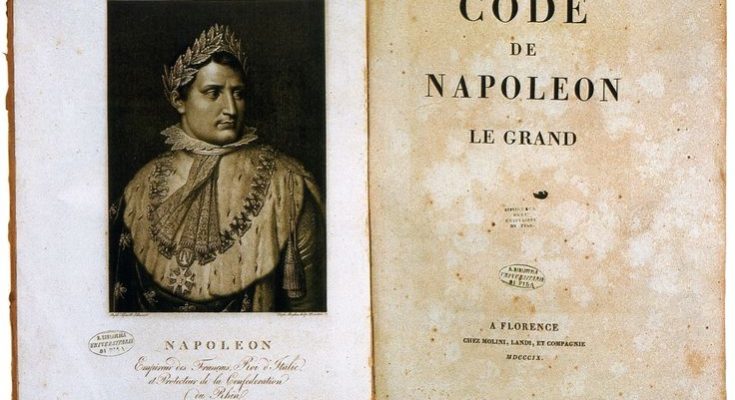The Napoleonic Code, established in 1804 by Napoleon Bonaparte, aimed to reform the French legal system based on the principles of the French Revolution. It is recognized for its clarity, accessibility, and consistency. Here’s a breakdown of its key aspects and impact-
Introduction of the Napoleonic Code-
- Established in 1804 by Napoleon Bonaparte.
- Aimed to reform the French legal system in line with the French Revolution’s principles.
- Noted for its clarity, accessibility, and consistency.
Key Features of the Napoleonic Code-
- Abolished Privileges by Birth- The code eliminated the feudal system that granted privileges based on one’s lineage, ensuring all citizens could be treated equally under the law.
- Equality Before the Law- It established a legal framework where every citizen had equal rights and responsibilities, irrespective of their social class.
- Right to Property- It secured property rights, making it clear that legally acquired property could be owned by any citizen.
- Simplified Legal System- The code streamlined complex laws into a more understandable and accessible legal system for the public.
Also Check – Napoleon and the Napoleonic Code- Impact on European Societies and Legal Systems
Impact on European Legal Systems-
- Global Influence- The principles of the Napoleonic Code influenced legal systems across Europe and other continents, promoting concepts of legal equality and secular governance.
- Adoption and Adaptation- Many countries modelled their own legal reforms after the Napoleonic Code, adopting its emphasis on uniform laws and secular authority.
Rationalisation of Administrative Systems-
- Simplified Divisions- Administrative divisions were reorganised for efficiency, reducing the complexity of governance.
- Centralised Administration- It introduced centralised administrative practices, streamlining governance and making it more effective.
- Improved Infrastructure- The reforms led to improved transportation and communication networks, facilitating economic growth.
Economic Reforms-
- Economic Freedom- By removing guild restrictions, the code allowed for greater economic freedom and entrepreneurship.
- Trade Facilitation- It introduced uniform laws, weights, and measures, and in some regions, a common currency, making trade easier and more predictable.
Mixed Reactions-
- Faced criticism for reinforcing authoritarian rule under Napoleon.
- Viewed as a tool of French imperial domination in conquered territories.
Legacy-
- The Code’s influence extends beyond Europe, affecting civil law systems worldwide.
- Continues to underpin modern legal systems, emphasising a codified and accessible legal framework.
The Napoleonic Code marks a significant moment in legal history, transitioning towards modern legal systems characterised by equality, clarity, and rational administration.
Also Check – The Role of Women in Nationalist Struggles – Short note
Also Check – The Frankfurt Parliament
Also Check – Giuseppe Mazzini – Italian Revolutionary thinker
Also Check – Giuseppe Garibaldi- Italian freedom fighter
Also Check – Count Camillo de Cavour
Also Check – The Rise of Nationalism in Europe- 39 Mcqs
Also Check – The Rise of Nationalism in Europe – Class 10 – Notes
Also Check – Otto von Bismarck- Architect of German Unification
Also Check – Briefly trace the process of German unification
Also Check – Napoleon and the Napoleonic Code- Impact on European Societies and Legal Systems

